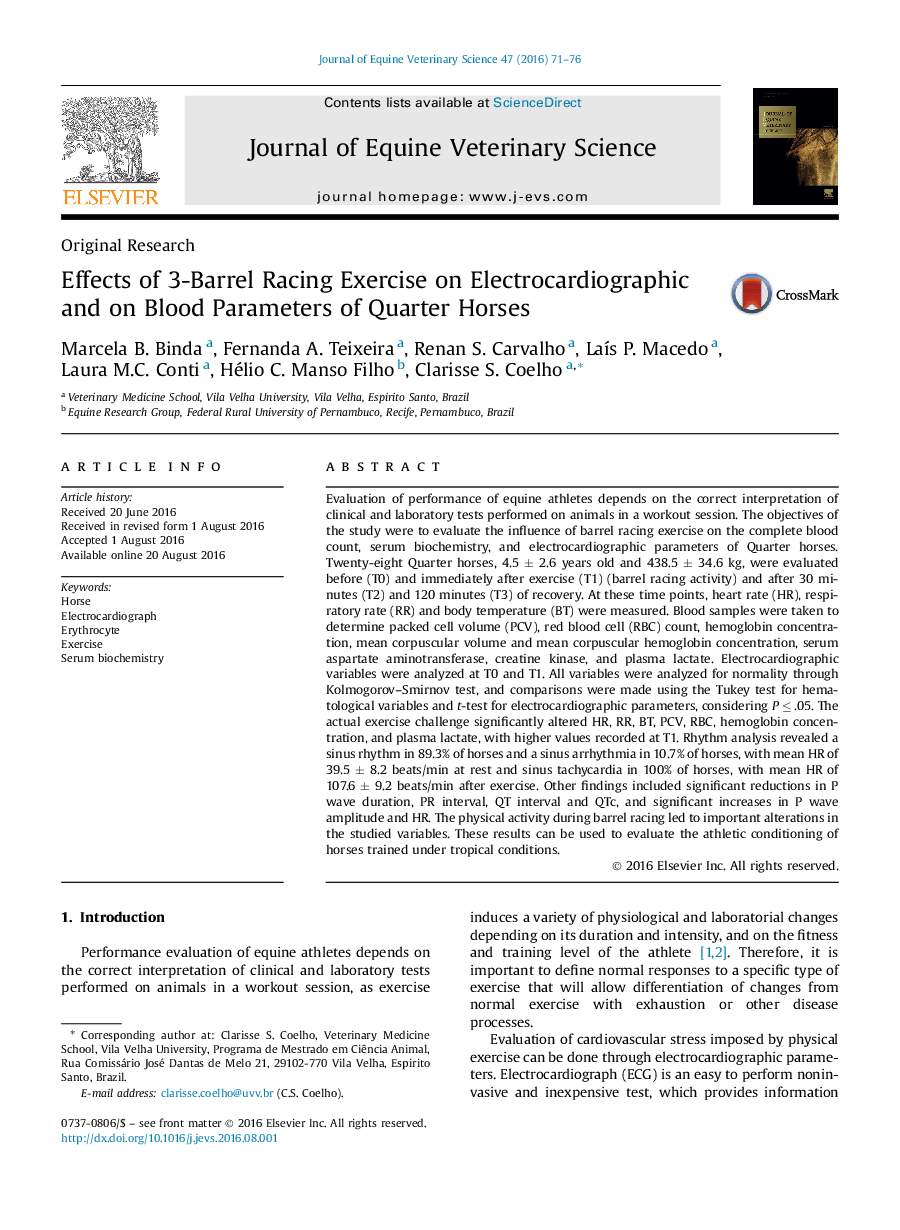| Article ID | Journal | Published Year | Pages | File Type |
|---|---|---|---|---|
| 2394321 | Journal of Equine Veterinary Science | 2016 | 6 Pages |
•Brand new research evaluating ECG of barrel racing horses under tropical conditions.•Understand possible influence of local climatic conditions is essential.•Biochemical and electrocardiographic alterations were observed after exercise.•Results can be used on the evaluation of Quarter horses raised in tropical conditions.
Evaluation of performance of equine athletes depends on the correct interpretation of clinical and laboratory tests performed on animals in a workout session. The objectives of the study were to evaluate the influence of barrel racing exercise on the complete blood count, serum biochemistry, and electrocardiographic parameters of Quarter horses. Twenty-eight Quarter horses, 4.5 ± 2.6 years old and 438.5 ± 34.6 kg, were evaluated before (T0) and immediately after exercise (T1) (barrel racing activity) and after 30 minutes (T2) and 120 minutes (T3) of recovery. At these time points, heart rate (HR), respiratory rate (RR) and body temperature (BT) were measured. Blood samples were taken to determine packed cell volume (PCV), red blood cell (RBC) count, hemoglobin concentration, mean corpuscular volume and mean corpuscular hemoglobin concentration, serum aspartate aminotransferase, creatine kinase, and plasma lactate. Electrocardiographic variables were analyzed at T0 and T1. All variables were analyzed for normality through Kolmogorov–Smirnov test, and comparisons were made using the Tukey test for hematological variables and t-test for electrocardiographic parameters, considering P ≤ .05. The actual exercise challenge significantly altered HR, RR, BT, PCV, RBC, hemoglobin concentration, and plasma lactate, with higher values recorded at T1. Rhythm analysis revealed a sinus rhythm in 89.3% of horses and a sinus arrhythmia in 10.7% of horses, with mean HR of 39.5 ± 8.2 beats/min at rest and sinus tachycardia in 100% of horses, with mean HR of 107.6 ± 9.2 beats/min after exercise. Other findings included significant reductions in P wave duration, PR interval, QT interval and QTc, and significant increases in P wave amplitude and HR. The physical activity during barrel racing led to important alterations in the studied variables. These results can be used to evaluate the athletic conditioning of horses trained under tropical conditions.
